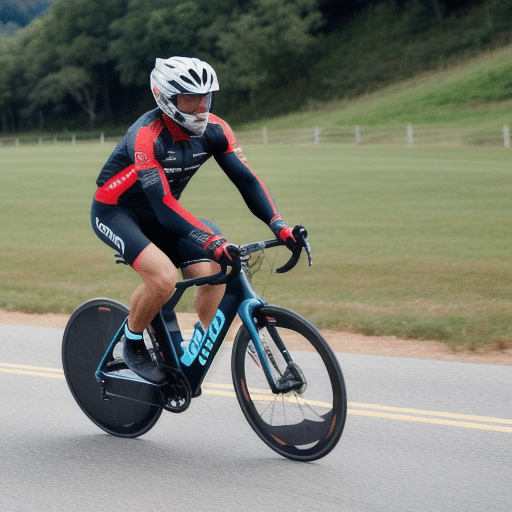The loading speed of a web page is a key factor for the success of any online site.
Not only does it influence the user experience, but it also has a direct impact on SEO ranking and bounce rate.
If your website takes too long to load, users may lose patience and abandon the page, which will negatively affect your conversion rate.
In this article, we will explore what load speed is and why it is important, how to measure and improve it, as well as the consequences of having a slow website.
We will also provide you with tips and tools to optimize the loading speed of your website and improve the user experience.
What is loading speed and why is it important for your website?
Loading speed refers to the time it takes for a web page to load completely in the user's browser.
It is a crucial factor for the success of any website, as visitors expect pages to load quickly.
In fact, according to recent studies, 47% of users expect a web page to load in less than two seconds, and 40% will abandon a website if it takes more than three seconds to load.
In addition, loading speed also affects SEO, as Google considers speed as an important factor in its ranking algorithm.
Therefore, a slow web page can have a negative impact on the site's visibility in search results.
The loading speed can also affect the bounce rate, i.e. the number of users who leave the site after visiting only one page.
If a page takes too long to load, users are more likely to leave the site without interacting with it.
In short, loading speed is a critical aspect for any successful website.
It is important to measure the loading speed regularly and take measures to improve it if necessary.
How to measure the loading speed of your website?
Measuring the loading speed of your web page is crucial to ensure that visitors have a good experience on your site.
A simple way to do this is to use free tools such as Google PageSpeed Insights or GTmetrix.
These tools analyze the loading speed of your site and provide you with detailed information about the problems affecting site performance.
In addition, they also offer you specific suggestions to improve loading speed.
Another useful tool is Pingdom, which measures the load time of your website from different geographical locations and shows you the average load time and the total load time.
This is especially important if your website has visitors from all over the world, as the loading speed may vary depending on the geographical location of the user.
In addition, you can also use your browser's developer console to measure the loading speed.
In Chrome, for example, you can open the developer console by right-clicking anywhere on the page and selecting "Inspect".
Then click on the "Network" tab and reload the page.
The console will show you the total loading time and the time each resource took to load.
In summary, there are several tools available to measure the loading speed of your website.
Using these tools will help you identify issues affecting site performance and allow you to take action to improve loading speed.
Tips to improve the loading speed of your website
To improve the loading speed of your website there are several strategies you can implement.
One of the most important is to optimize the images and code used on your page.
Images are a fundamental element in any website, but if they are not used correctly they can negatively affect the loading speed.
To avoid this, it is advisable to use tools to compress images without losing quality and reduce their size to the minimum necessary.
In addition, it is important to review the code of your page and remove anything that is not necessary or is obsolete, as this can slow down the loading of the site.
Another useful strategy is to use a quality web hosting service, as this can have a significant impact on the loading speed of your site.
It is also advisable to minimize the use of unnecessary plugins and scripts, as these can consume resources and slow down page loading.
Finally, it is important to keep in mind that loading speed not only affects user experience, but also SEO and bounce rate.
Therefore, investing time and resources in improving the loading speed of your website can be a very valuable investment to increase traffic and improve user satisfaction.
The consequences of a page slow web on SEO and bounce rate
A slow website can have negative consequences on SEO and bounce rate.
In terms of SEO, search engines such as Google take into account the loading speed of a website to determine its position in search results.
If a website is slow, it is likely to rank lower in search results, which means less organic traffic and less visibility.
In addition, a slow web page can also affect the user experience, which can increase the bounce rate.
If visitors cannot quickly access the information they are looking for, they are likely to leave the site. web site and look elsewhere.
This can result in a high bounce rate, indicating that visitors are not interacting with the website as expected.
A high bounce rate can also affect SEO, as it indicates to search engines that visitors are not finding what they are looking for on the website.
Therefore, it is important to pay attention to the loading speed of your website to ensure a good user experience and improve your position in search results.
Optimize images and code to improve loading speed
Optimizing images and code is crucial to improve the loading speed of a web page.
High resolution images and unnecessary code can significantly slow down the loading time of a web page.
Therefore, it is important to optimize images before uploading them to the website.
This can be done using online tools or specialized software that reduces file size without compromising image quality.
In addition, it is advisable to use suitable image formats, such as JPEG or PNG, which are compatible with most web browsers.
On the other hand, code can also affect loading speed.
It is necessary to review the code to eliminate any unnecessary or redundant functions.
Developers can use techniques such as minification, compression and concatenation to reduce file size and improve website loading speed.
In conclusion, optimizing images and code are two key aspects to improve the loading speed of a web page.
It is important to keep in mind that a fast website not only improves the user experience, but also has a positive impact on SEO and bounce rate.
Tools to analyze and improve the loading speed of your website
The loading speed of a website is one of the most important factors to take into account to improve user experience and search engine rankings.
Fortunately, there are several tools that can help you analyze and improve the loading speed of your website.
One of the most popular is Google PageSpeed Insights, which allows you to measure the loading speed on both mobile devices and computers, in addition to offering recommendations to optimize the speed of your website.
Another useful tool is GTmetrix, which provides you with detailed information about the performance of your website, including load time, page size and number of HTTP requests.
You can also use Pingdom Tools, which shows you how your website loads from different geographic locations and offers suggestions for improving loading speed.
In addition, if you use WordPress, you can install plugins such as WP Fastest Cache or W3 Total Cache to improve the speed of your website.
In summary, using these tools to analyze and improve the loading speed of your website can make a big difference in user experience and search engine ranking.
Loading speed and its impact on user experience
The loading speed of a website is a key factor in the user experience.
When users visit a web page, they expect it to load quickly in order to access the content they want to view.
If the page takes too long to load, users may become frustrated and leave the site before finding what they are looking for.
In addition, a slow website can have a negative impact on the brand image and credibility of the website.
Users may feel that the website is not well maintained or that it does not care about providing a good user experience.
On the other hand, a fast website with a good loading speed can improve the user experience and increase customer satisfaction.
Users can easily navigate the website, access the content they need and perform the desired actions without delay or interruption.
In addition, a fast web page can improve SEO and increase the visibility of the website in search engines.
In conclusion, loading speed is a crucial factor in the user experience and can have a major impact on the success of a website.
It is important for website owners to take steps to improve the loading speed of their pages, such as optimizing images and code, using tools to analyze website performance, and choosing a good web hosting provider.
By doing so, they can improve user satisfaction and increase the success of your website.
The loading speed of a web page is a crucial factor for the online success of any business or project.
It is essential to constantly measure and optimize it to improve user experience, search engine rankings and reduce bounce rate.
The tips and tools we have presented in this article can help you achieve this.
However, loading speed is not the only factor that influences the performance of a website.
The quality of the content, intuitive navigation, security and other relevant aspects must also be taken into account.
Therefore, it is important to continue researching and experimenting in order to create increasingly efficient and satisfactory websites for users.
What is your experience with the loading speed of your website? Have you implemented any successful strategy to improve it?




